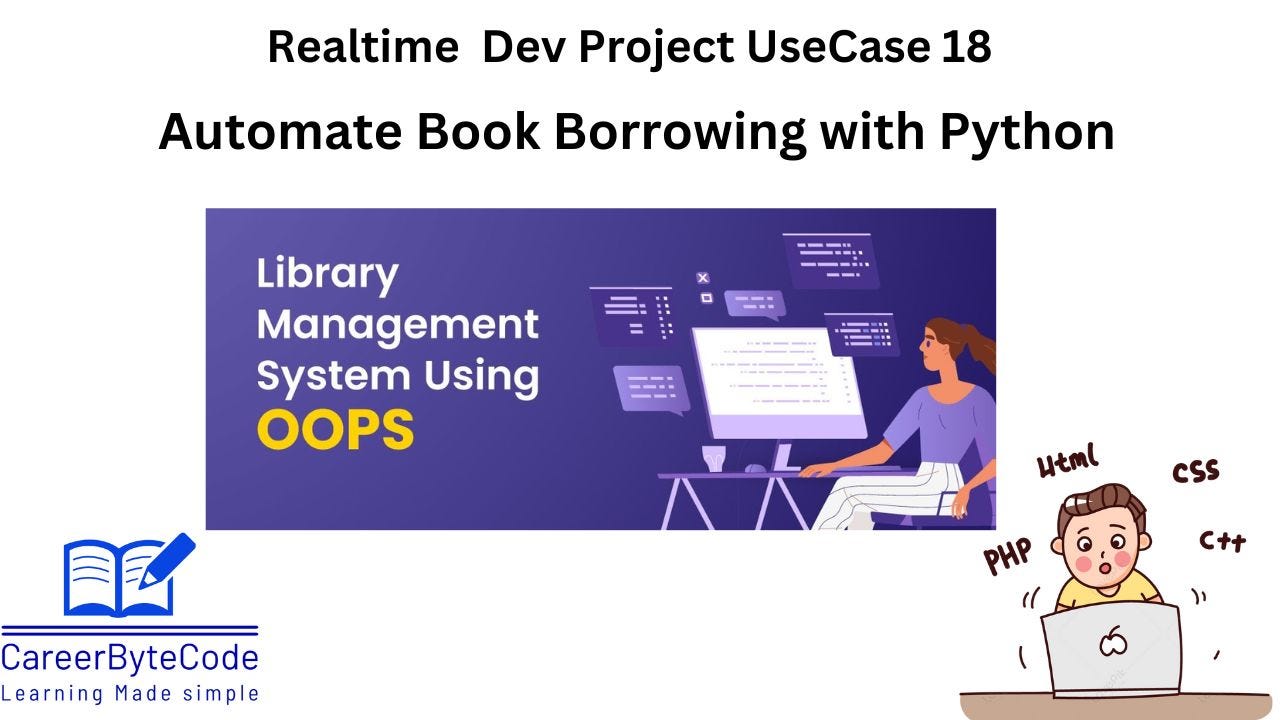OOP in Action: Building a Library Management System Using Python
A library needs an efficient way to manage its collection of books and track which books are available or borrowed.
1. Use Case Scenario
Context:
A library wants to manage its books and allow users to borrow and return them. Using Object-Oriented Programming (OOP) in Python, we can design a system where:
Books are stored in the library.
Users can borrow available books.
Users can return books after reading.
The system maintains the list of books and their availability status.
Actors:
Librarian/Admin: Manages the books in the library.
User/Student: Borrows and returns books.
Library System: Handles book storage, borrowing, and returning functionalities.
Main Flow:
Add Books to Library: The librarian adds books to the system.
View Available Books: Users can check which books are available.
Borrow a Book: If a book is available, the user can borrow it.
Return a Book: After reading, the user returns the book, making it available again.
2. Why We Need This Use Case
A library needs an efficient way to manage its collection of books and track which books are available or borrowed. Using Object-Oriented Programming (OOP) in Python, we can create a system where:
Books are stored and managed in the library.
Users can borrow available books.
Users can return books after reading.
The system maintains an updated list of books and their availability status.
3. When We Need This Use Case
When a library needs a digital system to track book availability.
When users need to check the list of available books before borrowing.
When librarians need an easy way to manage book records.
When a library wants to automate book borrowing and returning processes.
4. Challenge Questions
Keep reading with a 7-day free trial
Subscribe to CareerByteCode’s Substack to keep reading this post and get 7 days of free access to the full post archives.



